Fujifilm GFX launch: Hands-on with the GFX, X-T20, and X100F, plus more questions answered!
posted Monday, January 23, 2017 at 11:50 AM EDT
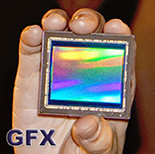
Last Thursday evening, Fujifilm held its formal coming out party for the GFX 50S in The Refectory at the High Line Hotel, a spectacular, historic room in what was once part of an Episcopalian seminary. The company packed the room with a dozen or so GFX 50S cameras, all three of the new GF lenses, vertical grips, a handful of other GFX accessories, and plenty of X-T20 and X100F bodies as well. Down at one end, there was a small studio set, where party attendees could have their pictures taken with models dressed like a royal family.
Unfortunately, none of the new cameras were deemed to be a production version, so Fujifilm would not allow me to take my own pictures with any of them. I also could not handle the new tilting viewfinder adapter. But I did get hands-on time with all three cameras, and the opportunity to ask a lot of questions about these three intriguing new cameras from Fuji.

Hands-on with the GFX and GF lenses (+ shutter durability)
The GFX 50S feels as businesslike as it looks. In terms of the quality of the construction, fit and finish, I’d rate the GFX about the same as the X-Pro2, or even a bit better. That means it’s extremely good. The prominent grip gave me a very comfortable and secure hold on the camera, which is a bit blocky but not overly heavy. I found all the buttons and controls, including the crucial AF joystick, to be well-placed and easy to use, with one exception: the very pronounced thumb ridge on the back of the camera interfered with my ability to spin the rear control dial as freely as I’d like. I’m afraid this might be a consistent, albeit relatively minor, annoyance to me in real-world use.
With the GF 32-64mmF4 R LM WR lens mounted, the combination is a bit bigger than a typical enthusiast DSLR such as a Nikon D810 or a Canon EOS 5D Mark IV with a 24-70mm zoom, but not noticably heavier. All three lenses feel very well made — again, about on par with most enthusiast and professional lenses from the full frame DSLR makers. Each of the GF lenses is a little bit lighter than I guessed from its size.
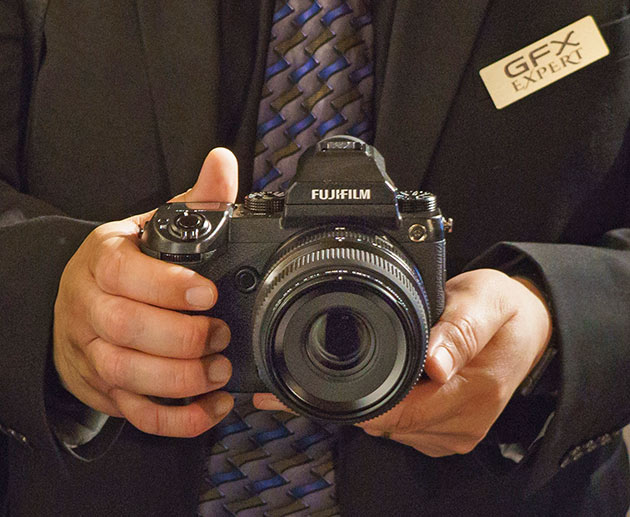
I spent some time assessing the responsiveness of the autofocus system of the GFX 50SS in the very dark Refectory. Tests like this are far from exhaustive, but I came away cautiously impressed. With the camera set to Single Autofocus (S-AF) using both the 32-64mm zoom and the GF63mmF2.8 R WR, focus was quite quick for a medium format camera and only a bit slower than enthusiast full-frame DSLRs. The camera also acquired focus fairly decisively despite the dark conditions, even when I intentionally pointed it at low-contrast subjects. Focus was noticeably slower with the GF120mmF4 R LM OIS WR Macro, but I’d have to test it further to know whether I thought that was likely to be a problem for me. I did not get a chance to test C-AF on moving subjects in any way, so can’t offer any comments on that subject just yet.
I also noted the unusual design of the vertical grip for the GFX 50S. It doesn’t extend to the top of the camera. (By top, I mean the side that’s on top when you’re holding the camera in vertical orientation. See the accompanying picture if that’s not clear.) This turns out to be really nice — it allows Fujifilm to put the shutter release and the forefinger control dial in a very comfortable position, and the camera is handy to wield when held this way. Clever and useful.
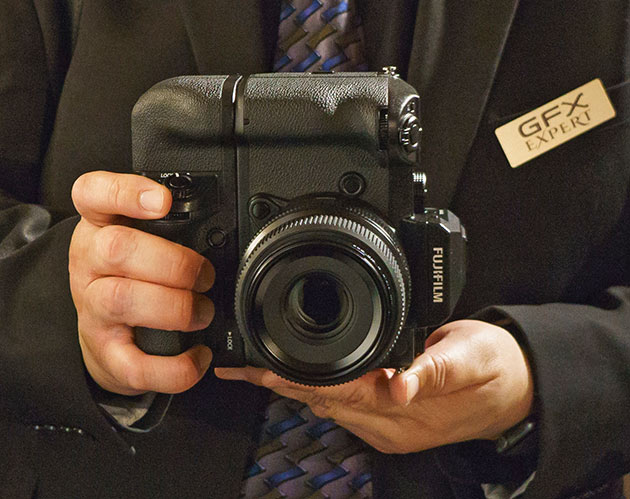
Later in the evening, there was a short presentation by the Product Manager responsible for the development of the GFX 50S, Makoto Oishi, Manager, Sales and Marketing Division in Fujifilm Japan’s digital camera division. He provided one bit of information I hadn’t seen before: the durability target rating for the GFX shutter is 150,000 actuations, which puts it in the same ballpark with many other pro-level cameras.
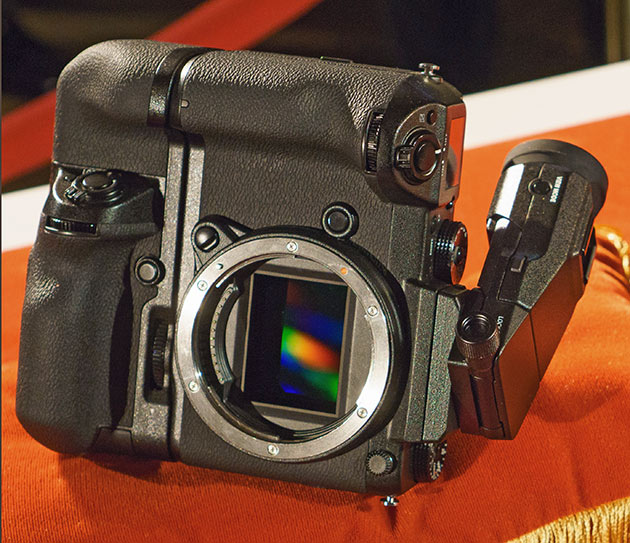
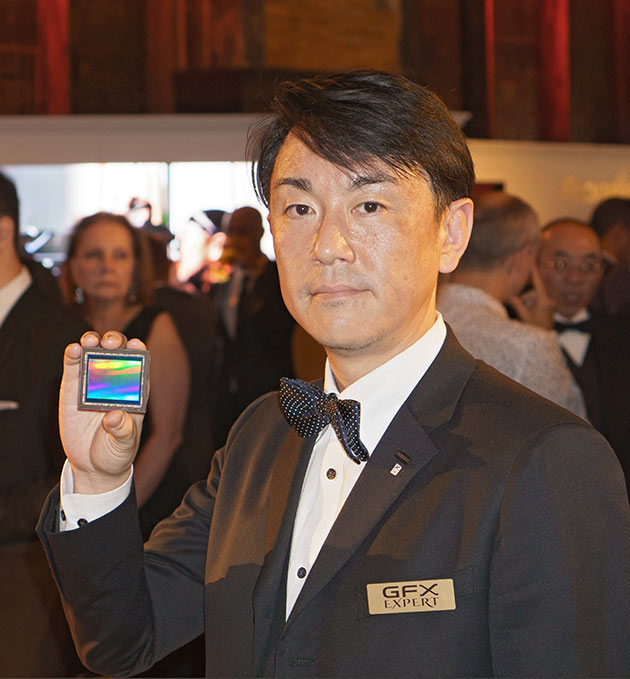

Hands-on with the X100F (+ our questions answered)
The body and controls of the X100F are fairly similar to its predecessor, the X100T. The big news is the new joystick, and it worked great for me — easy to reach with my thumb, and easy to operate. I think most photographers will see this as a big benefit for this camera. I’m also personally pleased with Fujifilm’s decision to move several buttons on the camera back from the left edge to the right edge of the LCD; I find it a bit easier to operate all back buttons with my right thumb, and the X100F’s buttons are easy for me to reach.
As we reported in our X100F preview, the autofocus system on this camera has been significantly upgraded to put it more on par with the X-Pro2 and X-T2 AF systems. In my brief tests inside the Refectory, S-AF performed really well, focusing quickly and decisively in conditions that were, as I already mentioned, quite dark. We’ll put it through more of its paces when we get a chance to review a production version, but, so far, it’s given me no cause for concern.
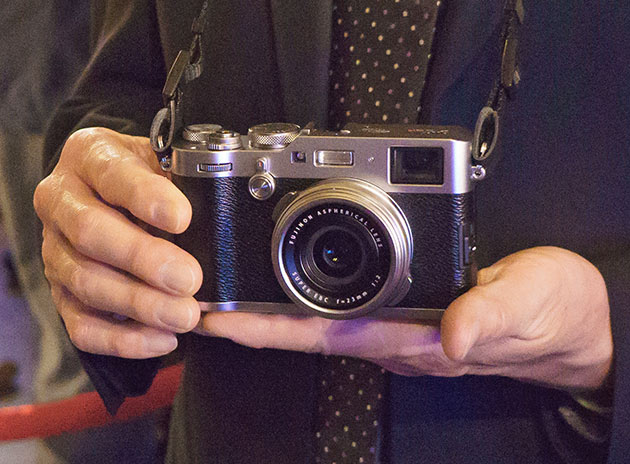
We had several questions about the X100F, which Fujifilm was able to answer
First, we wondered if the new front command dial could be programmed to control ISO (so it could be used instead of the lift-and-turn ISO dial on the camera’s top-deck). Yes, it can! I’m not a big fan of the lift-and-turn dial, so this is welcome news. Second, we were confused about some information we had received about potential differences in the way the electronic viewfinder (EVF) and the rear LCD might display selected and active AF points. But both the EVF and the LCD display behave the same way regarding AF point display. Third, readers asked us to confirm that the 23mm F2 lens of the X100F is the same as the one on the X100T — yep, Fujifilm told me, it’s optically identical.
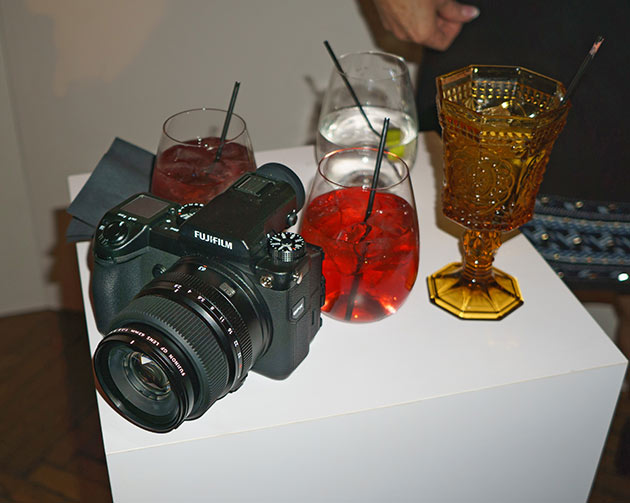
Hands-on with the X-T20 (+ no special weather resistance)
The body and controls of the X-T20 are nearly identical to its predecessor, the X-T10, which is largely a good thing. The new touch screen worked well in my brief tests and allows quick focus point selection when you’re shooting with the LCD. Like nearly all touch screens, it’s inactive when your eye is at the viewfinder.
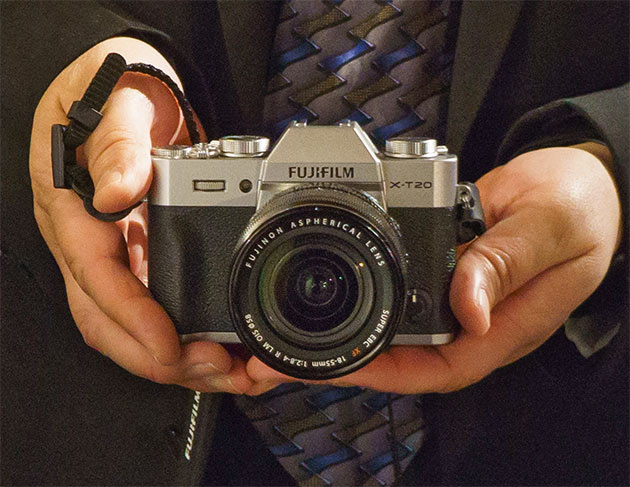
As with the other two cameras, I spent some time testing the X-T20’s autofocus in the venue. Again, it worked really well — quick and decisive on everything I pointed it at, even low-contrast subjects in very poor light. We’ll give it a more extensive test when we review it, but I think it’s safe to say that both the X100F and the X-T20 can be expected to focus much like the X-Pro2 and X-T2, at least in S-AF. That means fast and reliable S-AF in nearly all likely shooting situations.
We already updated our initial preview of the X-T20, but I wanted to re-emphasize it here for anyone who missed the update in the earlier article: the X-T20 has no special weather or dust resistance features, as the initial press materials that Fujifilm sent to us mistakenly said. This was confirmed to me by Kazuki Harigaya, Product Manager for Fujifilm North America.
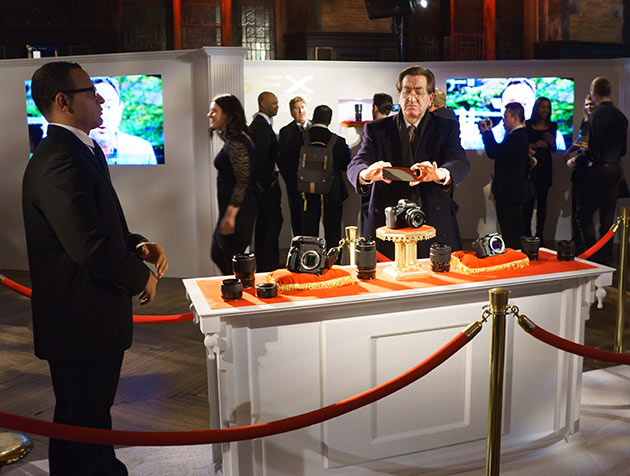
See our ongoing coverage from all three new Fuji models:
• Fuji X100F •
• Fuji X-T20 •
• Fuji GFX-50S •
• Fuji X100T vs Fuji X100F •